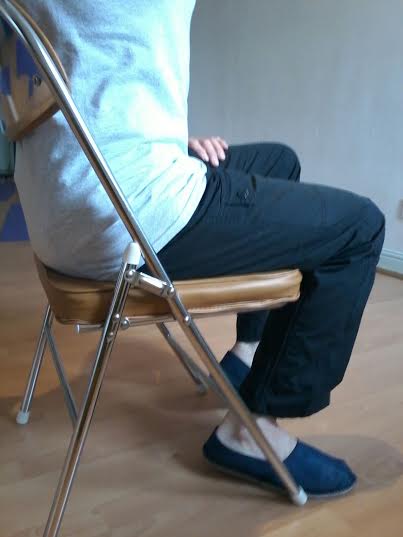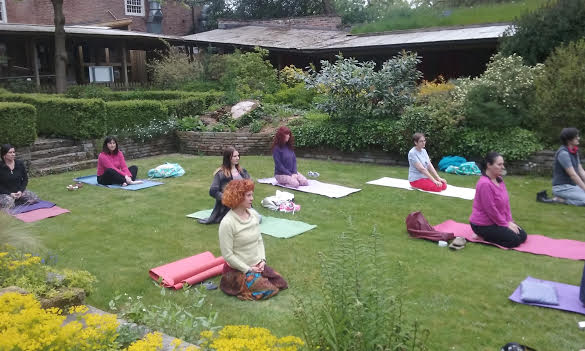Yoga in Times of Uncertainty
Posted on

The recent referendum on the EU seems to have thrown our nation into turmoil.
Whatever the outcome and whatever the path we go down as a nation in the coming weeks, months and even years there will be for the time being a measure of uncertainty.
The types of things we might have to anticipate are: change, conflict, obstacles, worries and the threat of regional and community isolation.
So how can yoga be of help with all this?
Yoga can help support our comfort, health and happiness in this increasingly stressful world.
In addition to what yoga can do for us individually the main concepts of yoga provide us with a mechanism for stemming the effects of social despair. We currently seem to be at a loss in our world discarding former values and hoping to construct new ones. In this scenario yoga can give us the means to discover our own true self or personal reality through self enquiry and self reflection. The strengths gained from this can enable us to come to terms with the wider realities of our world and environment.
Dealing with Change
One of the prominent techniques we use in yoga is asana or posture. Asana is the most prominent technique in yoga probably because it is the first thing many of us are introduced to when we take up the practice. Yoga is really more about the mind but we start indirectly with the body to get to the mind through the back door because it is more responsive to our commands than the mind.
Having said that a lot of good work can be achieved through the body.
If we use asana carefully over time and learn about gradual improvement rather than fast track excellence we learn that we have to be patient with change. We learn not to get too anxious about being right and perfect all the time and allow for development and evolution.
Yoga breathing in asana helps us to cultivate this patience with change and over time this patience is translated into our day to day life. We begin to react differently to circumstances we find ourselves in. It does not mean that we have to end up being passive and oblivious to what is going on around us and we can still be proactive in the change process. However, our reaction is more considered and from a position of greater calmness and harmony.
Dealing with Conflict

On the issue of conflict there is a great concept in yoga known as non-dualism. Dualism is where we tend to see everything as this or that, black or white, us and them, either or....
Non-Dualism is often a difficult concept to grasp because it is so easy to see things in a dualistic way:
soft/hard, cold/hot, pain/comfort, high/low, light/dark etc but if we look closer we often see that things are not always quite as they seem. Bit like yin and yang there are often bits of yin in yang and visa versa.
In our yoga practice we attempt to apply non-dualism by embracing both ends of the spectrum.
One of the prominent practices is to use our breath to lower tensions. Here's how we do it. Whenever we move or put our body parts into a yoga position there is a potential tension somewhere in our dimensional structure. We feel this as a sensation. The more momentary or prolonged tension we introduce the more energy we use and the resulting experience can be one of tiredness and even stress that could lead to anxiety or headaches. By applying the breath to the posture we help to alleviate or soften the feeling of tension. We attempt to incorporate a degree of relaxation or calmness into the process.
There is a similar embracing of stillness with movement in yoga. Remember the well known phrase “moving into stillness”. This can have a number of interpretations and I have always thought of it as moving in such a way that the movement has its own element of stillness. The great Yoga Sage Patanjali said that all asana must be effortless. To do this we have to blend effort with calmness.
There is a kind of merging of these opposites.
We attempt to make “challenge” more comfortable - movement more still - tension more relaxed.
Pain more painless or tolerable - Still being aware of the qualities of both.
Dealing with Obstacles
It follows from this thinking that in our practice we strive to allow ourselves more access to new experiences learning to embrace things that are open to more than one interpretation. This is in fact one of the things we learn after a while of studying yoga. Many concepts are open to our interpretation but we still have to make room for other meanings and explanations. In this process we can learn more about ourselves. We learn to be more calm and deal better with uncertainty. Be less reactionary. Eventually, we move to solve issues without stress, participating more fully in life by removing obstacles like anxiety, inertia, doubt and lack of focus.
Dealing with Isolation
Even though yoga practice can often be in the privacy of our own homes it is still community based in that our choice of postures can be what we have picked up from attending classes. Many students of yoga after attending classes for a while could just as easily practice alone but they attend classes often for the community it brings, for the commitment it gives them. They are more able to share experiences and ensure their continued practice.
As human beings we cannot help having a deep connection with others. Isolation can all too often lead to physical and mental problems. We have all experienced this in our lifetime in our own communities when lonely reclusive people can end up mentally withdrawn and in physical decline.
Yoga class association allows us to link our calmness and challenges with others and share our human condition. As with all other yoga methods this strength of fellowship can translate into the wider community where we can bring our skills of physical, mental and emotional flexibility, strength, composure, poise and balance, calmness, compassion, understanding, friendliness and contentment all of which helps us greatly in our relations with others.
Barry Todd (Hatha Yoga Trainer)

 Picture this: A country house in it's own grounds with views of the sea and the mountains, lots of quaint features and an atmosphere reflecting of yeateryear mainly because thankfully many of the original features have been preserved and maintained.
Picture this: A country house in it's own grounds with views of the sea and the mountains, lots of quaint features and an atmosphere reflecting of yeateryear mainly because thankfully many of the original features have been preserved and maintained.

